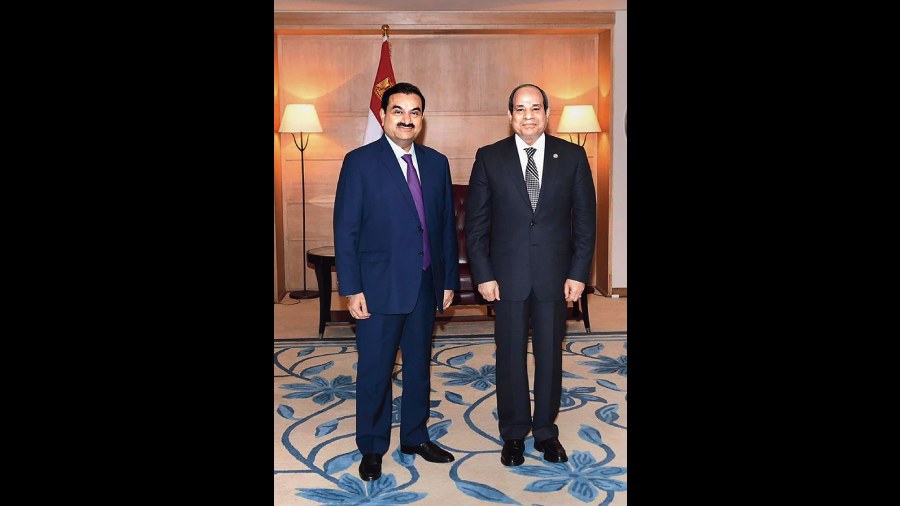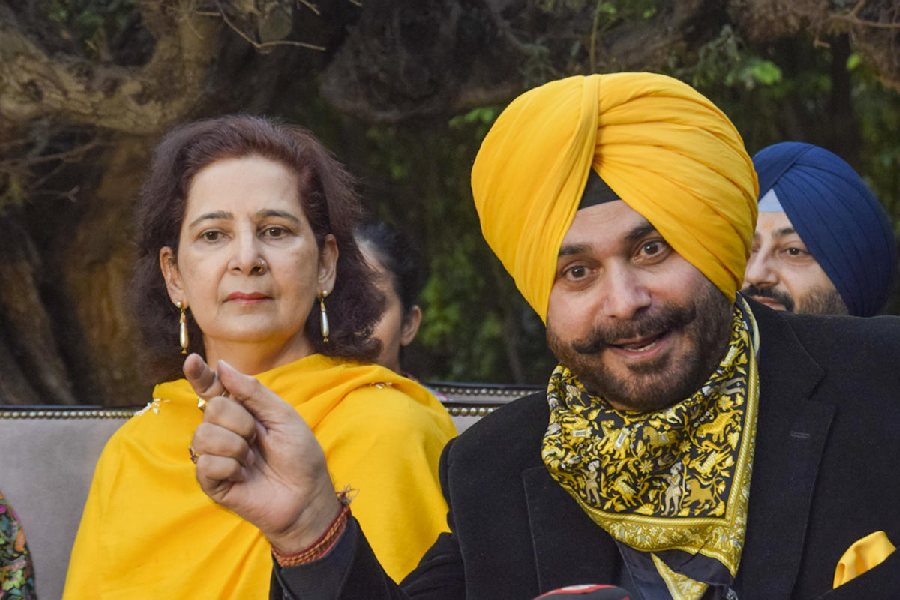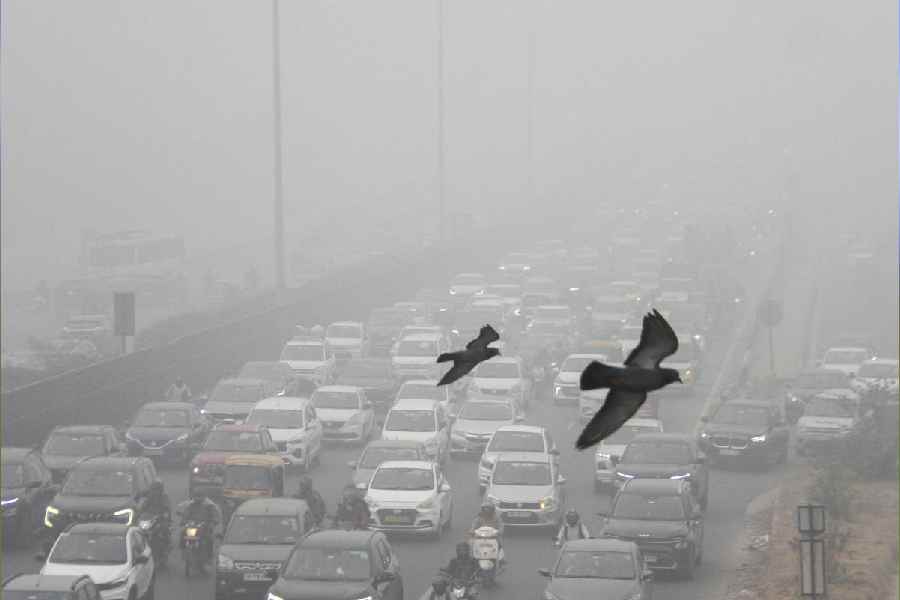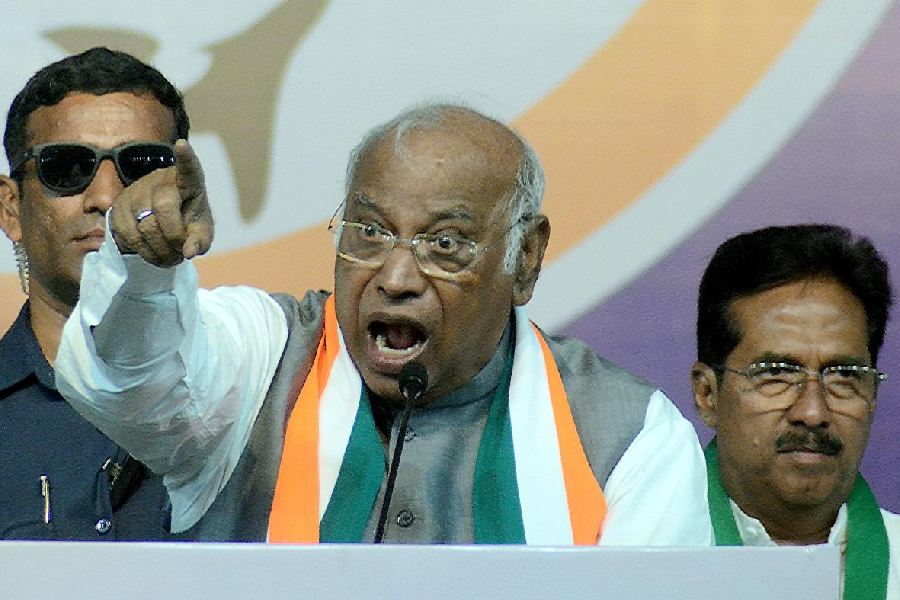Gautam Adani began the year as one of the richest men who ever lived, an upstart billionaire whose conglomerate, one of India’s largest, had surged in value by 2,500 per cent in five years.
That rise, as he portrayed it, wasn’t his alone: It was inseparable from the “growth story” of India itself. His companies’ goals were in lock step with the country’s needs, he often said. Relying on his longstanding partnership with Prime Minister Narendra Modi, he brought his private companies — spanning power, ports, food and more — into alignment with one politician more closely than any business titan before him.
Now, in spectacular fashion, the fortunes of his Adani Group are crashing down even faster than they had shot up.
More than $110 billion in market value — roughly half of the Adani Group’s worth — has vanished in just over a week, like air from a burst balloon. The pinprick was a report by a small New York investment firm, Hindenburg Research, whose description of “brazen accounting fraud” and stock manipulation sent investors fleeing, just as the Adani Group was beginning a sale of new shares to investors, India’s biggest-ever secondary share offering.
Adani wrapped itself in nationalism as a defence, calling the report “a calculated attack on India” and on “the independence, integrity and quality of Indian institutions”.
Hindenburg retorted that Adani was waving the flag to obfuscate shady dealings, like the use of offshore shell companies to exaggerate its stocks’ valuations in order to paper over its excessively debt fuelled ascent.
The debacle could damage confidence in the rest of the Indian stock market. At their peak, Adani shares accounted for more than 6 per cent of India’s two main exchanges; today, the figure is barely 3 per cent. More troublingly, Adani’s fall could jeopardise the idea of India as the world’s next great hope as a driver of global economic growth.
The government is facing questions about whether financial regulators were doing their jobs properly while the Adani Group threw off funny signals for Hindenburg to pick apart. The country’s chief regulator has had a sterling reputation in the three decades since it was empowered by market-crashing stock scam. Now, the concern is that India’s financial oversight has bigger holes than believed, or that the politically connected Adani somehow got a free pass.
Sharmila Gopinath, a research director who covers India for the Asian Corporate Governance Association, noted that of Adani’s many entities, Adani Enterprises, the flagship, “was the only profit-making company”.
“It was almost lock step between the government and Adani,” Gopinath said. “That was when we all started looking at his debt position, his leveraged position, and there was something very off about the group.”
Politically, there is the question of whether Adani’s downfall will dent the national development model that Modi has relied on for his reputation as a builder of the things India needs. India is not short of companies with experience of the sort that Modi’s ambitions demand. But if debts overwhelm the Adani Group, India could find itself without an industrial champion.
Fraud and failure are hardly the image that Modi or India want to convey, this year in particular, with the country freshly minted as the world’s fifth-largest economy and asserting itself more forcefully on the global stage.
The US foreign policy establishment is eager to strengthen ties with India. Russia’s war in Ukraine, alongside the increasingly contentious relationship between the United States and China, has made India seem more urgently needed as a partner. And India is making much out of its rotation into the role of host to the Group of 20 later this year, billing itself as “the Mother of Democracy” for the occasion.
Modi’s political opponents think they may catch him in a moment of weakness, even if they appear to have little chance of dislodging him in next year’s election.
The story of the close working relationship between Adani, 60, and Modi, 72, begins in earnest in 2002, when Hindu-Muslim riots ravaged Gujarat. Modi’s image was badly damaged. The leaders of Modi’s own BJP, then in control of the national government, were furious about the stain to the country’s image caused by the bloodshed in Gujarat.
India’s biggest businesses were, if anything, even more critical. The leaders of two of the country’s oldest business groups, Bajaj and Godrej, questioned Modi about his state’s “law-and-order situation” at a meeting of India’s largest trade association in 2003.
It was the Gujarati business community that came to Modi’s aid then. Adani helped create an organisation to diminish the trade association locally and, working with Modi’s state government, helped create an annual conference for investors with the name “Vibrant Gujarat”.
A “Gujarat model” soon emerged, by which market-based or at least private development displaced the creaky, state-driven model of earlier governments. It gave an answer to many economists and ordinary citizens who wanted to see India’s progress in the global marketplace sped along.
This pumped-up Gujarat proved too important for either the BJP or the trade association to ignore; politicians and businessmen alike made pilgrimages to see Modi and plead forgiveness for having criticised him. Over time, Modi’s image was rehabilitated.
When he ran for national office in 2014, he was able to stand as an icon of modern, tech-driven economic development. After he triumphed, he flew to Delhi, the seat of national power, on Adani’s private jet.
Once Modi took office, shares in Adani jumped — Adani Enterprises, one subsidiary, was suddenly worth 23 per cent more — as investors seemed to calculate that closeness to the new government would bring rewards in time.
In an interview with The New York Times in October, Adani attributed his wild success to “governance of the businesses, the financial discipline, decision-making processes with more predictability, and confidence of our lenders and rating agencies”. And, “of course, underlying growth of the country”.
In the budget that finance minister Nirmala Sitharaman delivered in the midst of Adani’s market-cap destruction, she announced that the government would be relying on a “virtuous cycle” that starts with private investment and is reinforced with public money. The Adani-Modi approach as national policy.
In 2018, Adani became the operator of six profit-earning airports after the government changed rules restricting ownership to companies with aviation experience. Adani has denied that the government did him any favours. The Adani Group did not reply to requests for comment.
Near the end of the new share offering’s three-day window on Tuesday, institutional investors, including the State Bank of India and the Life Insurance Corporation of India, lined up behind a fund led by Abu Dhabi’s royal family. Together with a host of unnamed Indian business families, they proceeded to bail out the doomed sale, committing themselves to paying outdated prices for shares that could be bought for less on the open market.
At the same time, Sitharaman, the finance minister, was solemnly reading out the annual budget in Parliament, making no mention of the blood bath on India’s stock exchanges. Eventually, her silence, like that of her boss, Modi, came to seem otherworldly. Two large investment banks, Credit Suisse and Citigroup, said they would no longer accept securities issued by the Adani Group as collateral against margin loans.
Finally, Adani pulled the plug on its own share offering.











